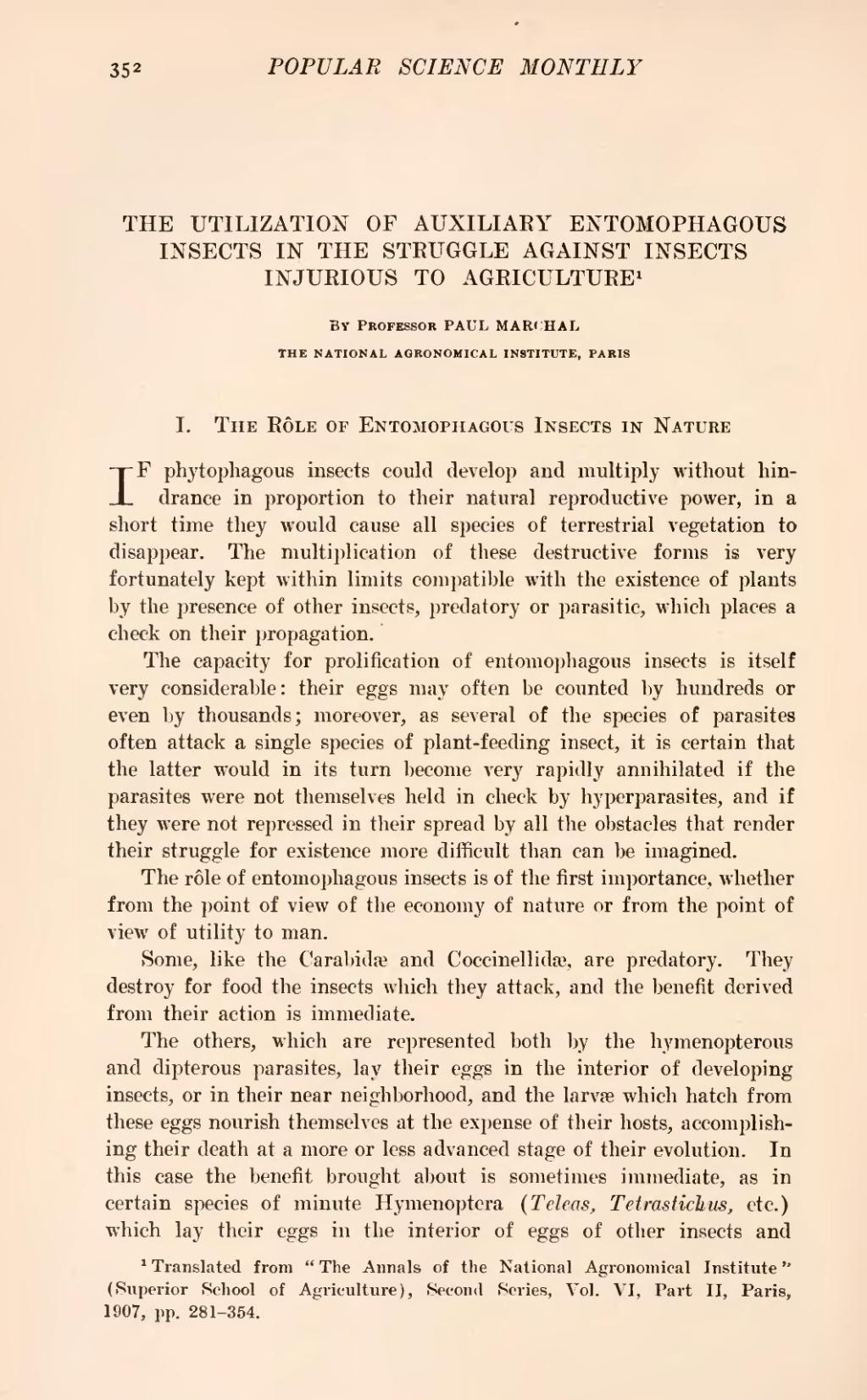| THE UTILIZATION OF AUXILIARY ENTOMOPHAGOUS INSECTS IN THE STRUGGLE AGAINST INSECTS INJURIOUS TO AGRICULTURE[1] |
By Professor PAUL MARCHAL
THE NATIONAL AGRONOMICAL INSTITUTE, PARIS
I. The Rôle of Entomophagous Insects in Nature
IF phytophagous insects could develop and multiply without hindrance in proportion to their natural reproductive power, in a short time they would cause all species of terrestrial vegetation to disappear. The multiplication of these destructive forms is very fortunately kept within limits compatible with the existence of plants by the presence of other insects, predatory or parasitic, which places a check on their propagation.
The capacity for prolification of entomophagous insects is itself very considerable: their eggs may often be counted by hundreds or even by thousands; moreover, as several of the species of parasites often attack a single species of plant-feeding insect, it is certain that the latter would in its turn become very rapidly annihilated if the parasites were not themselves held in check by hyperparasites, and if they were not repressed in their spread by all the obstacles that render their struggle for existence more difficult than can be imagined.
The role of entomophagous insects is of the first importance, whether from the point of view of the economy of nature or from the point of view of utility to man.
Some, like the Carabidæ and Coccinellidæ, are predatory. They destroy for food the insects which they attack, and the benefit derived from their action is immediate.
The others, which are represented both by the hymenopterous and dipterous parasites, lay their eggs in the interior of developing insects, or in their near neighborhood, and the larvæ which hatch from these eggs nourish themselves at the expense of their hosts, accomplishing their death at a more or less advanced stage of their evolution. In this case the benefit brought about is sometimes immediate, as in certain species of minute Hymenoptera (Teleas, Tetrasticcus, etc.) which lay their eggs in the interior of eggs of other insects and
- ↑ Translated from "The Annals of the National Agronomical Institute" (Superior School of Agriculture), Second Series, Vol. VI, Part II, Paris, 1907, pp. 281-354.
